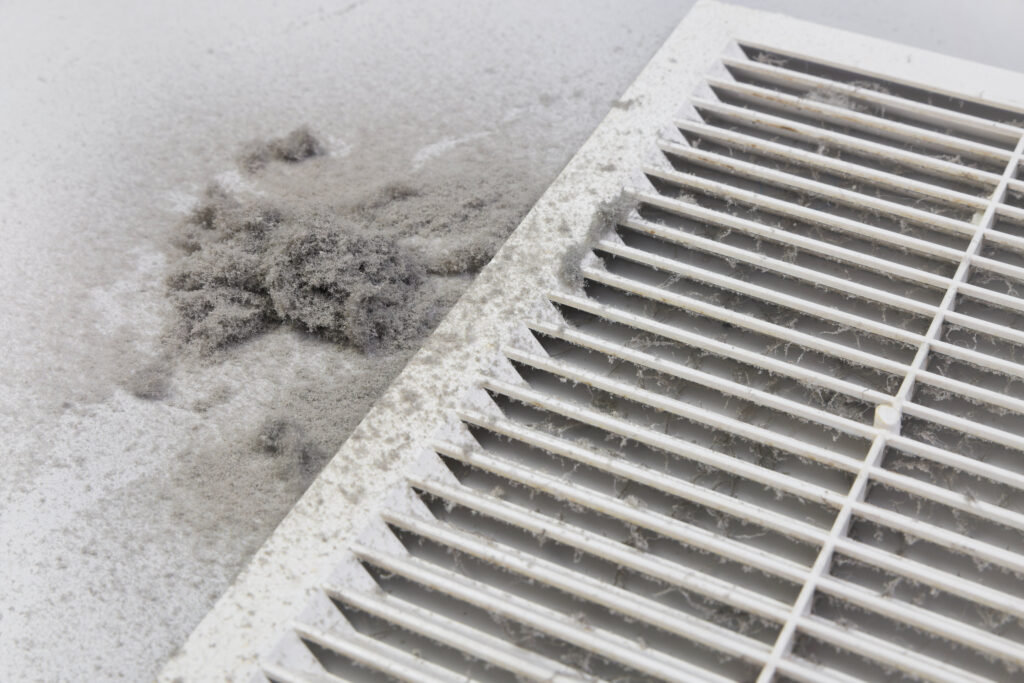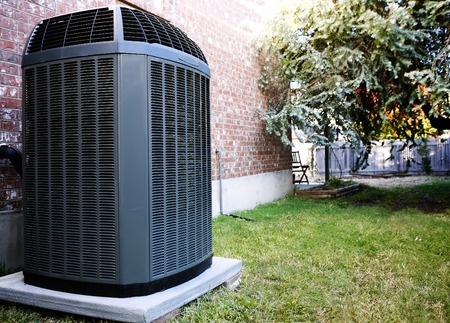When it comes to changing an air filter, most people think it’s a simple process. While they are correct, some people have a difficult time replacing the air filter or figuring out exactly what to do. Proper maintenance of your air conditioning and furnace will assure good air quality in your home, increase the lifespan of your system, and consume less energy, lowering your bills. Your filters should be changed every 30-90 days, depending on the type and efficiency of your air filter. During peak winter and summer months, your HVAC system is operating at its highest capacity, and it’s recommended that you change your air filter every month. Here Fritts Heating & Air gives a step-by-step process of changing out your HVAC air filter.
What Are HVAC Air Filters?
HVAC air filters are one of the most important components of your heating and cooling system. Often overlooked, these filters can be the difference in your air quality. Typical air filters look like a large cardboard box and are usually made of spun fiberglass material framed in a cardboard frame. Air filters can also be made from cloth or pleated paper but your average consumer filter will be cardboard and fiberglass material. The importance of HVAC air filters is that they catch different kinds of contaminants and particulates. Common pollutants include dust, dirt, pollen, mold spores, fibers, lint, hair, animal fur, bacteria and other microorganisms. Typically, filtration occurs when air is brought back to the HVAC equipment to be conditioned and circulated again. The air then passes through and the particulates and contaminants are removed from it.
Things You Need
- Disposable air filters 8-11 MERV (any brand).
- Vacuum cleaner and/or dust rag.
- Pen or marker to document the date of installation.
Step-By-Step Process
Locate The Return Air Vents
Most central HVAC systems have at least one return air vent, sometimes more if you have a larger home. If you have a bigger system or multiple HVAC systems in your house, multiple filters will need to be changed. Return air vents are the larger vents that take air in, not the ones that blow air out. They are often located on the wall. Sometimes they can be found located in the ceiling.
Clean The Air Vent Cover
Do you notice dust or dirt on your air vent cover? This is a definite way to put unneeded strain on your system. Dust on your vent cover can prevent air from flowing into your system properly. If you don’t have a vacuum handy, you can always use a damp towel and clean off the dust from the cover. If it is located on the wall close to the floor, the bottom may be especially dusty. Take a few minutes and make sure the cover is cleaned properly and all dust and grime are removed.
Remove The Dirty Air Filter
Once you are finished cleaning the outside of the air vent cover, turn off your system and open the cover revealing the dirty air filter. Carefully remove the old filter and dispose of it properly. If you compare the old filter to the new filter side by side, you can see the difference a new filter will make. If you have a pet as you will generally see an increase in dirty and grim on your filter. Once you remove the existing filter, look for its dimensions. This information is usually printed on the cardboard filter frame. If you cannot locate this information, use a measuring tape or ruler to measure the dimensions for height, width and thickness. For example, most standard air filters are 16-x-25-x-4. In other words, 16 inches wide; 25 inches long and 4 inches thick.
Document The Installation Date
With a pen or marker, write the date of installation on the filter itself. Writing the date of installation helps you remember when you’re not sure if it is time to replace it or not. It’s easy to pop open the air vent cover and look inside if you forgot. Once you know the installation date, its a good idea to set a calendar reminder for every 2-3 months to replace the dirty one.
Locate The Air Flow Direction Indicator
Each filter has an airflow direction indicator on them. It usually is an arrow pointing in the direction of the airflow. Remember that the return air vent sucks in air, so it’s important to place them the correct way for optimal efficiency. Now that you know how your system takes air in, you see why having an improper air filter with a high MERV can be detrimental to your HVAC system’s health. When your system can’t take in enough air, it can cause the whole system to malfunction. When your system works harder than it should, it can end up costing you more money in the long run.
Install The Clean Air Filter & Close The Cover
Set the filter in the same spot as the old one so it covers the air intake completely. It’s important to get the right size filter so the filters are able to do their job. They keep your HVAC equipment clean on the inside which also keeps dust, pollen, hair and other large particles out of the circulating air in your home. Once you have the air filter installed properly, close the air vent cover and enjoy the cleaner air coming from your system.
Need HVAC Maintenance?
At Fritts Heating & Air, we’re not comfortable until you are. That means keeping you warm during the winter months and providing you with prompt and professional heating system repair services when you need us. We repair all brands of residential and commercial heating systems. Let us keep your home or business warm with our expert heating system repair services. When you first notice that your furnace is not working or keeping your home or business warm appropriately, it’s best to call the furnace repair experts at Fritts Heating & Air. Our highly trained HVAC technicians will inspect, service, and repair your heating unit. We offer our customers more than two decades of experience within the HVAC industry. We also have HVAC financing options available.




